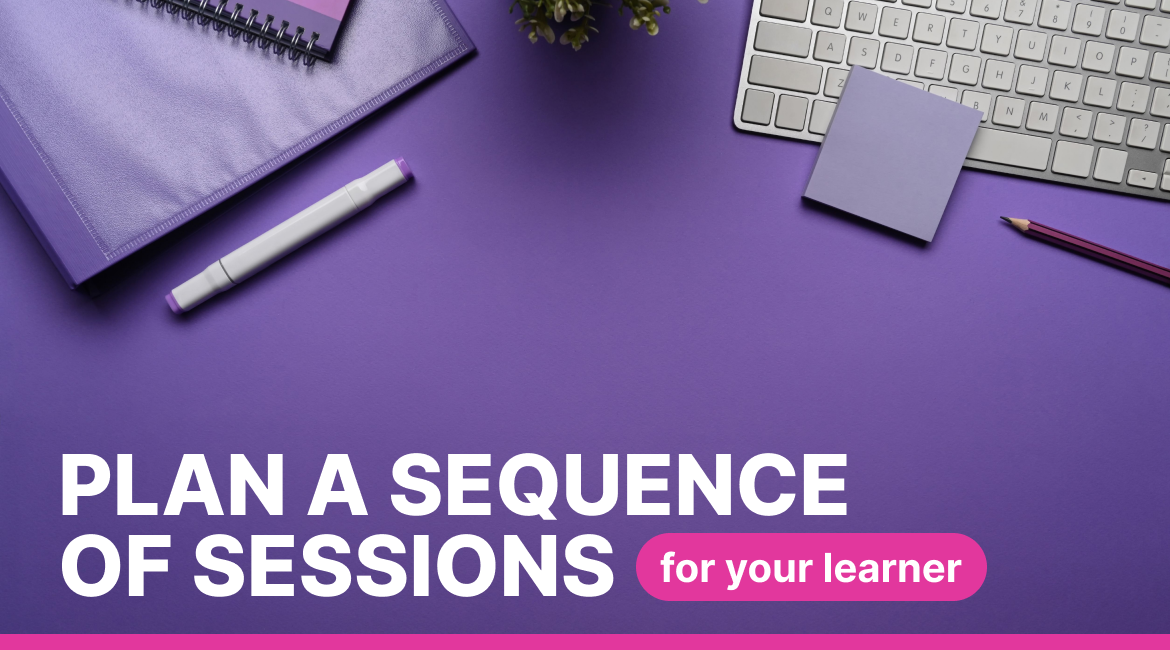Communication with Learners during Sessions and After
Discover how small talks, staying on point, and utilizing chat features can enhance communication with learners, ensuring productive and engaging tutoring sessions.
Read more
In today’s fast-paced educational environment, the effectiveness of tutoring hinges not just on the quality of individual sessions but also on how these sessions are structured over time. A well-planned sequence of tutoring sessions can dramatically enhance a learner’s understanding and retention of material. Whether preparing for exams or building foundational knowledge, the strategic organization of topics and review sessions makes a significant difference.
At Tutorpeers, we recognize the importance of continuity and communication in educational success. That’s why we’ve introduced a new Chat feature on our platform. This innovative tool opens communication between participants once a session is booked and remains available after the session concludes. It serves as a vital link, allowing tutors and learners to plan the first and subsequent sessions with greater ease and flexibility. This ensures that each step in the learning process is well-informed and purposefully built upon the previous one.
The foundation of any effective tutoring program lies in a deep understanding of the learner's individual needs and goals. Before planning a sequence of sessions, tutors must assess not just the learner's academic level but also their learning styles, interests, and long-term objectives. This personalized approach ensures that the tutoring sessions are informative, engaging, and relevant to the learner.
Assessment Techniques:
Creating a Personalized Learning Plan:
Continuous Reassessment:
By understanding and aligning with the learner’s needs and goals, tutors can create a highly effective and personalized tutoring experience.
To ensure each tutoring session is productive and leads to measurable progress, it is crucial to establish clear and specific objectives for each meeting. These objectives act as a roadmap, guiding both the tutor and the learner towards achieving targeted educational outcomes.
Defining Clear, Measurable Objectives:
Example Objectives in Different Subjects:
Incorporating Tutorpeers Chat to Enhance Objectives:
By setting up well-defined objectives for each tutoring session, tutors can create a structured learning environment that not only tracks progress effectively but also adapts to the evolving needs of the learner.

How the Chat Feature Works:
Effective Strategies for Chat Use:
The Tutorpeers Chat feature is not just a tool for logistical planning but also an integral part of the learning process, offering a dynamic and interactive way to enhance the educational experience.
Creating a strategic sequence of tutoring sessions is crucial for effective learning. This sequence should build on previous knowledge while introducing new concepts in a structured manner, allowing the learner to progress steadily and confidently.
Step-by-Step Guide to Planning a Sequence:
Example Sequence for a Subject (Mathematics):
Utilizing Tutorpeers Chat for Curriculum Feedback:
This structured approach helps maintain focus and motivation, encourages deeper understanding, and fosters a robust educational experience.
Effective tutoring requires a balance between following a structured plan and being responsive to the learner’s progress and feedback.

Importance of Flexibility:
Techniques for Gathering and Integrating Feedback:
Example of Implementing Feedback:
Suppose a learner struggles to understand complex algebraic equations during a feedback session. The tutor could then adjust the next session to include a review of foundational algebra concepts before progressing. Additionally, they could provide supplementary materials through the Chat feature, such as tutorial videos or step-by-step guides, to aid the learner's understanding.
By valuing and integrating feedback, tutors can create a dynamic educational environment that adapts to the learner's needs.
In conclusion, planning a sequence of tutoring sessions with a clear understanding of goals, structured objectives, and a responsive approach to feedback ensures a comprehensive and adaptable learning experience. By leveraging tools like the Tutorpeers Chat feature, tutors can maintain an open line of communication, tailor their teaching strategies, and facilitate an environment that is conducive to educational success. We encourage tutors and learners alike to embrace this structured yet flexible approach to maximize learning outcomes and achieve their educational objectives.
Q: How does planning a sequence of tutoring sessions enhance learning?
A: A well-planned sequence of sessions helps enhance understanding and retention by systematically building upon previously covered material, ensuring a coherent and cumulative learning process.
Q: What role does understanding a learner's needs play in tutoring?
A: Understanding a learner’s needs and goals is crucial as it allows tutors to tailor the sessions specifically, making the learning experience more engaging and relevant.
Q: How does the Tutorpeers Chat feature support educational success?
A: The Tutorpeers Chat feature facilitates ongoing communication, allowing for pre-session planning and post-session reviews. This continuous interaction helps adapt learning plans dynamically and reinforces educational goals.
Q: What is the importance of setting objectives for each tutoring session?
A: Setting clear, measurable objectives for each session provides a roadmap, guiding the tutor and learner towards achieving targeted educational outcomes and ensuring productive and focused learning sessions.
Q: How can tutors effectively use feedback in their sessions?
A: Regular feedback helps tutors adjust the learning plan and teaching methods to meet the learner’s needs better. Incorporating feedback ensures that the tutoring remains responsive and effective, adapting to the learner’s pace and evolving educational goals.
Discover how small talks, staying on point, and utilizing chat features can enhance communication with learners, ensuring productive and engaging tutoring sessions.
Read moreExplore the seamless payment system of Tutorpeers in our comprehensive guide. Understand how to add cards, manage fees, and enjoy secure transactions for a smooth tutoring journey.
Read moreWe offer a simple and convenient way for students to earn community service hours by providing tutoring sessions. Plus, our platform provides a certificate of the hours conducted on our platform, making it easy to provide proof of your service hours for scholarships, college applications, and more!
Read more